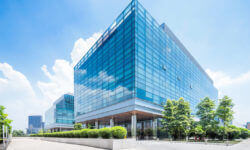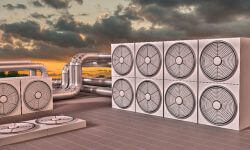Looking for alternatives to HFCs? You’re not alone. A2L refrigerants are growing in popularity around the world.
In 1987, a coalition of nations signed a treaty known as the Montreal Protocol. This agreement led to the banning of refrigerants responsible for the depletion of the ozone layer. Throughout the 1990s, ozone-harming chemicals were phased out in favor of a new chemical: hydrofluorocarbons, or HFCs. While HFCs helped heal the hole in the ozone layer, they have terrible side effects — scientists have discovered that HFCs contribute thousands of times more to global warming than CO2.
The United States Department of Energy has a multitude of different responsibilities, but the organization’s primary responsibilities involve managing the nation’s nuclear infrastructure. As ONE of its many responsibilities, the DOE also creates efficiency standards for HVAC equipment. The newest set of standards, 2023 DOE Efficiency Standards, become effective January 1, 2023. These 2023 DOE Efficiency Standards are based on research conducted by independent entities. The DOE and other organizations provide these researchers with funding so that they can explore ways to optimize energy consumption. DOE standards primarily apply to HVAC equipment manufacturers and installers. However, they can also impact your business in several ways. By voluntarily adhering to these standards, you can save money and improve energy efficiency. Additionally, you may be able to access tax credits by designing a system that complies with 2023 standards. Join us as we examine the latest set of 2023 DOE standards and what they mean for your business.
Read more →Where are the savings? That’s the theme of the building industry in this post-pandemic era. Many raw materials have increased in price, and construction budgets for commercial and residential high-rises are skyrocketing. This makes it more important than ever to know where the those savings are. These savings sometimes come from the least expected places. One of them is the 179D Energy Tax Deduction. This allows tax savings for measures that increase energy efficiency in buildings through the HVAC system. The 179D Energy Tax Deduction is also known as EPAct. It applies to commercial buildings, and multi-family residential buildings that are four stories or higher (above ground). Owners can expense up to $1.80 per square foot of the cost of improvements that increase energy efficiency.
Read more →We have gone into what geothermal systems are before. But, to recap, these systems work similarly to other HVAC structures except geothermal utilizes the ground rather than air. What we haven’t discussed is how geothermal heat pumps (GHP) work in large buildings. Since incorporating green technology is getting more popular so are commercial geothermal heat pumps. Not only are they eco-friendly they also offer low operating costs. So, for this article, let’s talk about the three main benefits of incorporating GHPs into your building.
Read more →There are a lot of technologies we have discussed before. We specifically talked about many trends this year in HVAC technology. Many of these articles focused on indoor air quality, specific systems like chilled beams, and even net-zero buildings. However, there is a lot on the topic we still haven’t covered. When it comes to HVAC there is a lot of innovative technologies. So, for this article, we will be focusing on topics and systems we haven’t covered before.
Read more →In 2015, chilled beam technology was projected to grow nearly double by 2020. Now projections are showing the U.S. will contribute around 28% in chilled beam system demands by 2026. This is largely due to energy efficiency regulations in North America. Currently building energy consumption is about 40% of the total energy consumption in the U.S. As a push toward lower carbon emissions continues to grow, it stands to reason so will technologies that reduce energy consumption. Chilled beams offer major benefits in energy efficiency.
Read more →When talking about the health and wellbeing of employees or customers within a building, you are referencing the IEQ. IEQ, or Indoor Environmental Quality, includes air quality, lighting, thermal conditions, and ergonomics. Specifically, the effects they have on any occupants of a building. When building or designing a space, it is important to consider IEQ. Proper IEQ strategies protect people’s health, improve quality of life, reduce stress, and prevent potential injuries.
Read more →Wondering what qualities to search for? We believe facility managers need this in an HVAC company. This is a handy guide listing the best qualities to seek out and expect when considering your HVAC service company.
Read more →







